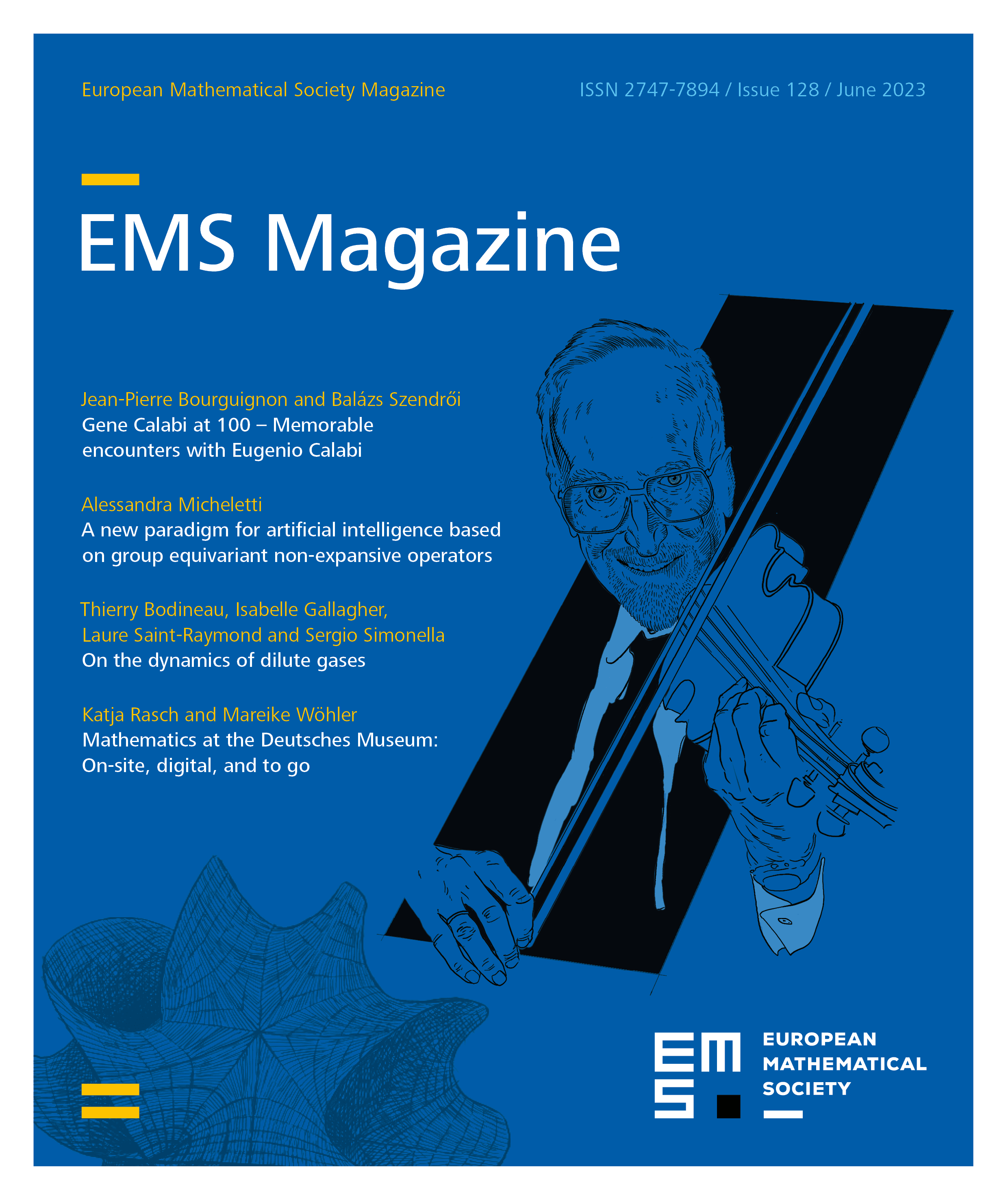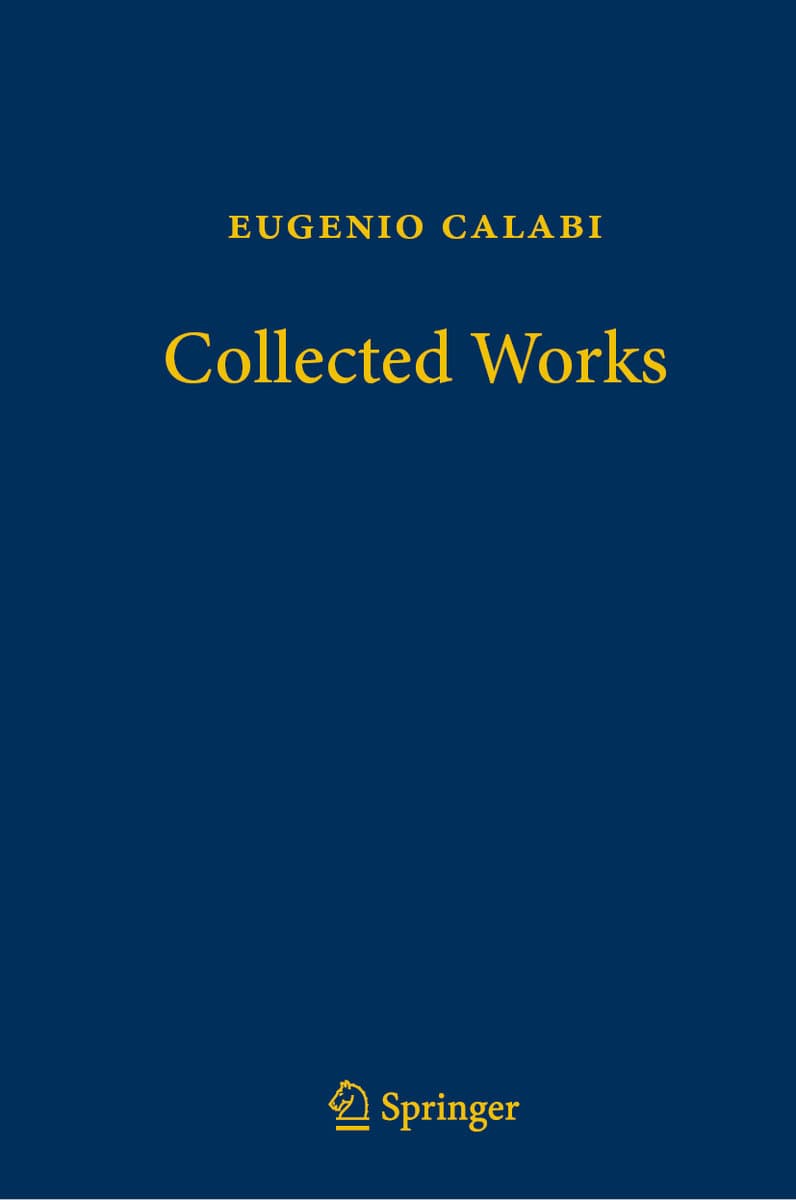All rights reserved.
Eugenio Calabi is a hugely important figure in modern differential geometry, whose ideas have strongly influenced the field for over 70 years and counting. This volume brings together nearly every paper he wrote, together with a collection of commentaries and personal reminiscences on his career.
Of course, putting Calabi’s papers in a single volume was always going to be a good idea, but what raises this collection to an even higher level is the accompanying commentaries. They are written by mathematicians who are experts in the areas that Calabi revolutionised, but just as importantly who also know the man himself. They give skilful surveys of several of the topics which Calabi worked on. They also contain some beautiful anecdotes which bring the telling of Calabi’s work to life.
The human side of mathematics is, naturally, completely absent from research texts; and yet, the doing of mathematical research is deeply intertwined with personal interaction. For example, I was fascinated to learn from Claude LeBrun’s commentary about an exchange between Calabi and Louis Nirenberg. “I am telling you, and repeat after me:” said Nirenberg, “One can’t prove existence theorems without a priori estimates.” In this single quote, one can see the genesis of modern Kähler geometry! Reading about moments like these, and there are several in the commentaries, was an absolute delight.
The mathematical content of the commentaries is also exemplary. Like most mortals who are interested in Calabi’s work, I only knew one of the areas he worked in in any detail (for my part, canonical metrics in Kähler geometry). It was fabulous to be guided through Calabi’s contributions in other fields. To be frank, holding the collected works of a mathematician of the stature of Calabi is quite intimidating. Without the commentaries, it might have been difficult to start reading papers on less familiar topics. Even though Calabi writes with ease and elegance, an outsider to a field might not know where to start or how the papers relate to each other. The commentaries, however, make it simple. They summarise Calabi’s results and put them in context. They are a beautiful invitation to read the papers themselves, and not just the more familiar ones. In my case, I spent several happy hours learning about affine differential geometry, something that would certainly never have happened if I had not picked up this volume.
The commentaries also put Calabi’s work in historical context. In reading them, one thing that shines out above all else is how Calabi’s mathematics was frequently many years ahead of its time. His approach to canonical metrics in Kähler geometry, beginning in the 1950s, gave birth to an entire field of research that is perhaps more active today than at any point previously. Some of the questions Calabi asked about Kähler metrics are only now beginning to be fully understood. Indeed, as LeBrun writes “[…] Gene’s visionary early work truly seems like a piece of twenty-first century mathematics that somehow landed in the middle of the twentieth century.” Another example of Calabi’s pioneering style is his notion of weak subsolution for linear elliptic partial differential equations which, in the words of Lawson, “presages modern viscosity theory more than twenty years before its emergence as a major branch of analysis.”
Alongside these theoretical paradigm shifts, Calabi also specialised in the construction of examples. Again, the commentaries help put these examples in context. For instance, in joint work with Beno Eckmann, Calabi found the first examples of compact simply-connected complex manifolds which are not algebraic; as Lawson says, this was a transformational result at the time. I was also surprised to learn that Calabi was the first person to build hyperkähler manifolds; indeed, as Bourguignon, Chen and Donaldson point out, he was the first person to consider them at all.
The collected works of Eugenio Calabi are worthy of a place on the bookshelf of any person with a serious interest in differential geometry. Having said that, mine hasn’t made it back on to the bookshelf since I opened it!
With contributions by Shing-Tung Yau, Blaine Lawson, Marcel Berger and Claude LeBrun. Eugenio Calabi – Collected Works. Springer, 2020, 843 pages, Hardback ISBN 978-3-662-62133-2, eBook ISBN 978-3-662-62134-9
Cite this article
Joel Fine, Book review: “Eugenio Calabi – Collected Works” by Jean-Pierre Bourguignon, Xiuxiong Chen and Simon Donaldson (Eds.). Eur. Math. Soc. Mag. 128 (2023), pp. 70–71
DOI 10.4171/MAG/146
